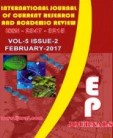Abstract Volume:5 Issue-2 Year-2017 Original Research Articles
 |
Online ISSN : 2347 - 3215 Issues : 12 per year Publisher : Excellent Publishers Email : editorijcret@gmail.com |
2Department of Animal Science and Technology, Federal University of Technology, P. M.B. 1526 Owerri, Imo State, Nigeria
Pastoralists in the semi-arid zones of north-eastern Nigeria utilize diversities of browse trees to augment dry season ruminant feeding because of poor feed resource availability during the period. Primary data generated from 300 pastoralists surveyed across Mubi north, Gombi and Jada LGAs of Adamawa state were used to determine the commonly browsed trees in the state during the dry season period. Thereafter, proximate compositions of leaf meals from five most preferred dry season browses among these were determined in order to estimate their nutrient values. Ten commonly utilized browse plants were identified as being utilized in each of the LGAs, with Balanite aegyptica, Khaya senegalensis, Tamarinae indica, Panicum maximum and Mangifera indica being the most preferred by pastoralists in the area. Crude protein content of the leaf meals of these preferred plants ranged from the 9.35% recorded in P. maximum to 16.73% in T. indica, while ether extract values ranged from the 2.89% recorded in P. maximum to 6.72% in K. senegalensis. The leaf meals were moderate in their crude fibre, with K. senegalensis recording 23.53%, while P. maximum recorded 32.50%. Ash values were high with mean values standing at 10.41±1.97% and M. indica recording the highest value of 13.25%. These findings support the value placed on these plants by pastoralists as dry season feed resources. There is the need to promote extensive planting of these cherished browse species in the study area in order to provide the needed dry season feed resources to livestock, while limiting the frequent cutting of other tree species by the pastoralists; a habit that leads to deforestation and dwindling forest resources in the zone.
How to cite this article:
Kubkomawa, I.H. C.C. Achonwa, U.E. Ogundu, I.C. Okoli, and Udedibie, A.B.I. 2017. Distribution and Proximate Compositions of Dry Season Browses in Adamawa State, North-Eastern Nigeria.Int.J.Curr.Res.Aca.Rev. 5(2): 79-88doi: http://dx.doi.org/10.20546/ijcrar.2017.502.011



Quick Navigation
- Print Article
- Full Text PDF
- How to Cite this Article
- on Google
- on Google Scholor
- Citation Alert By Google Scholar
